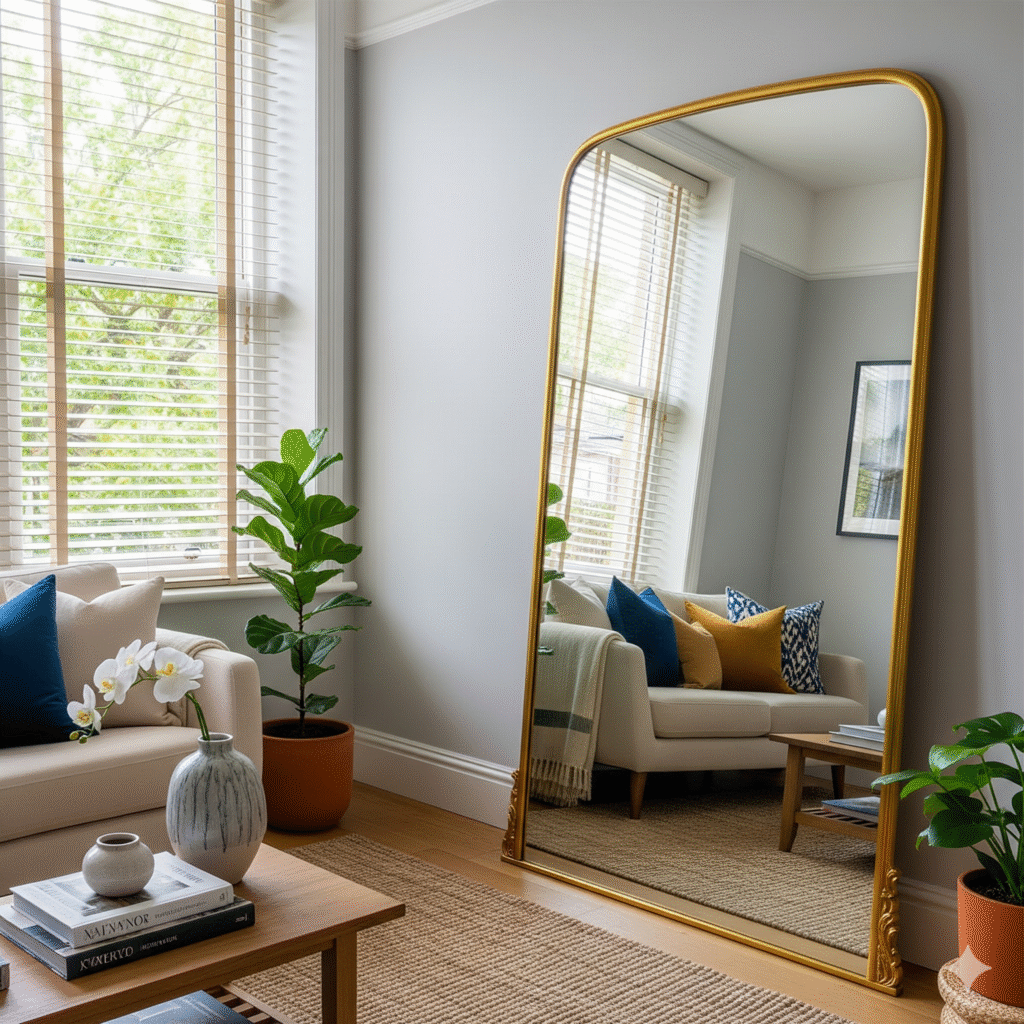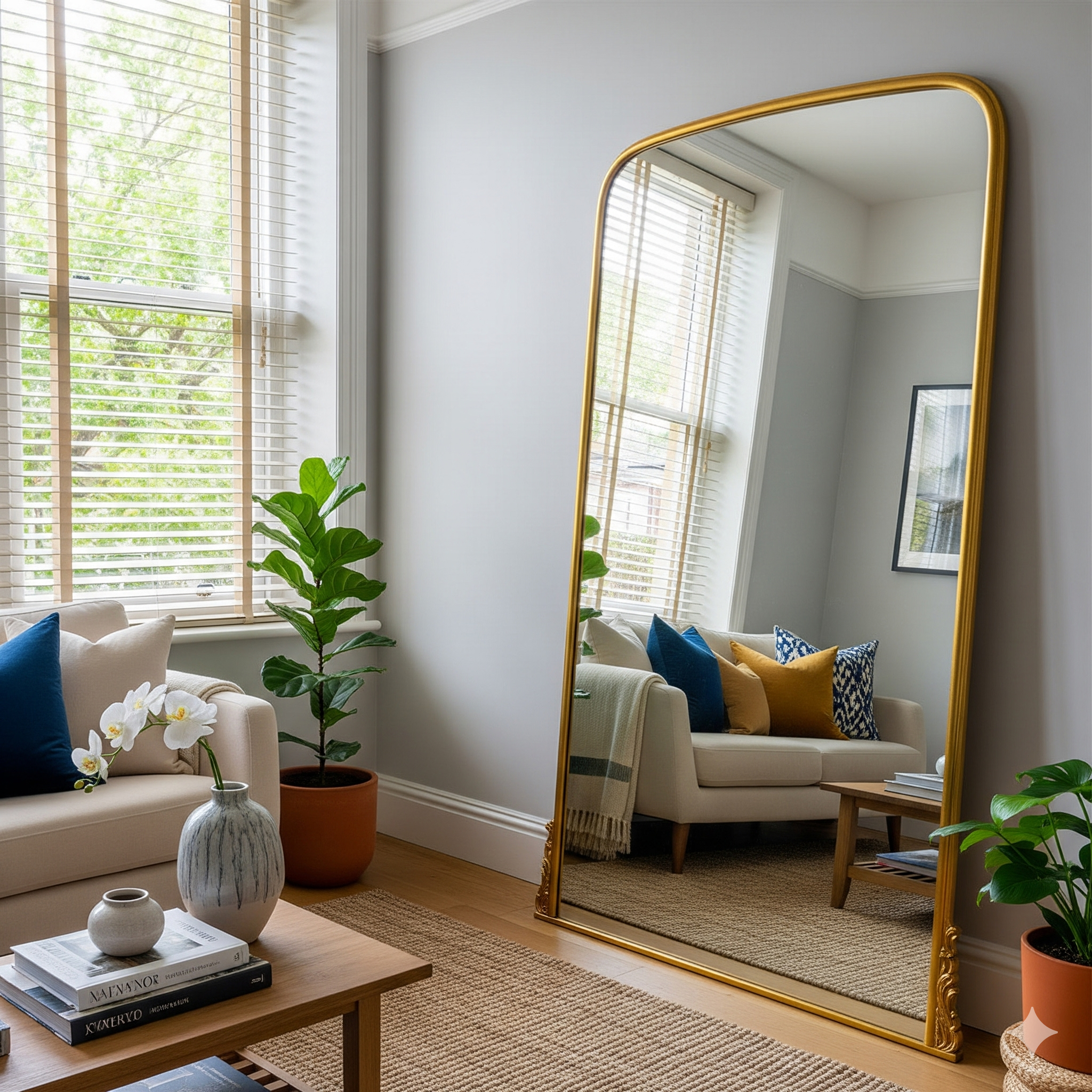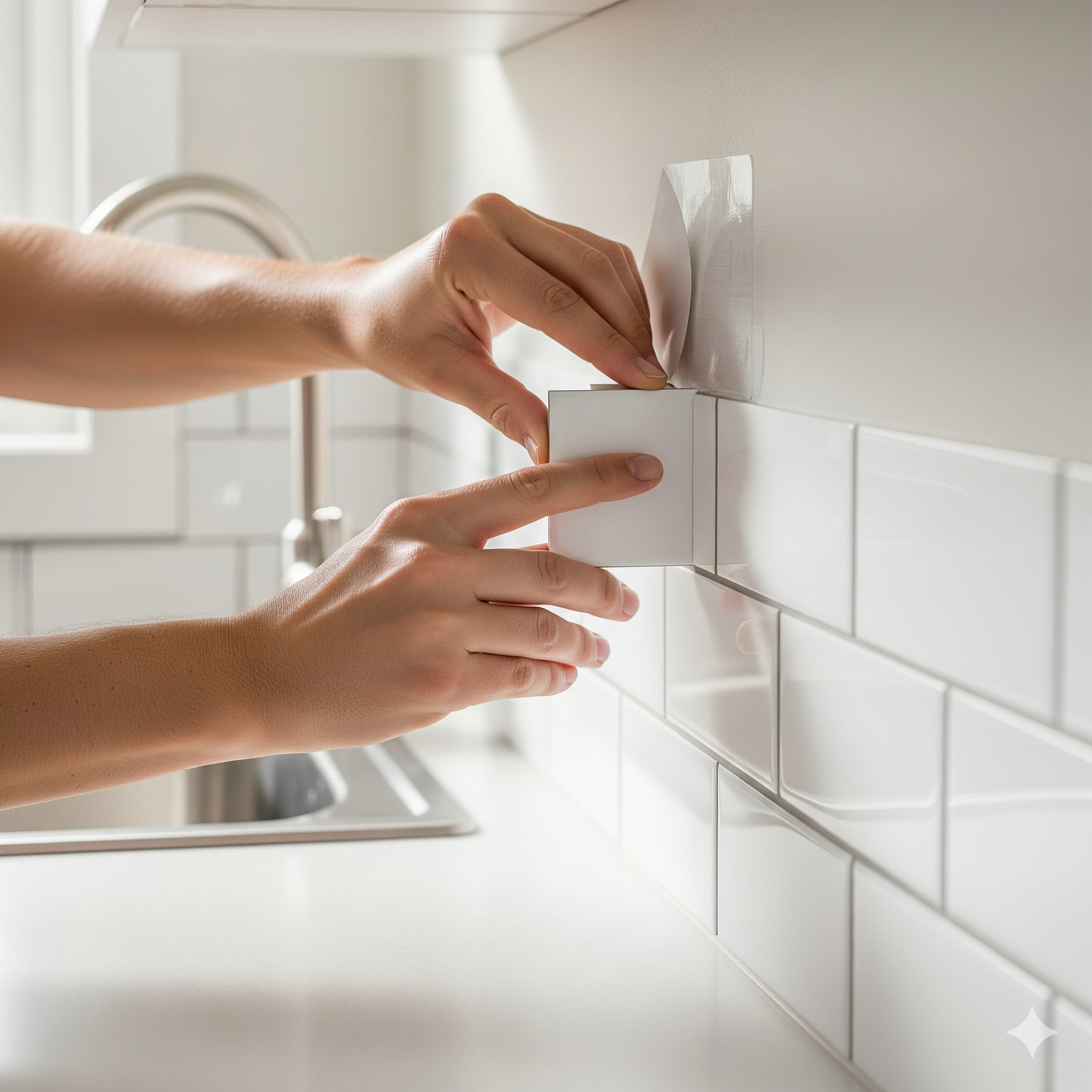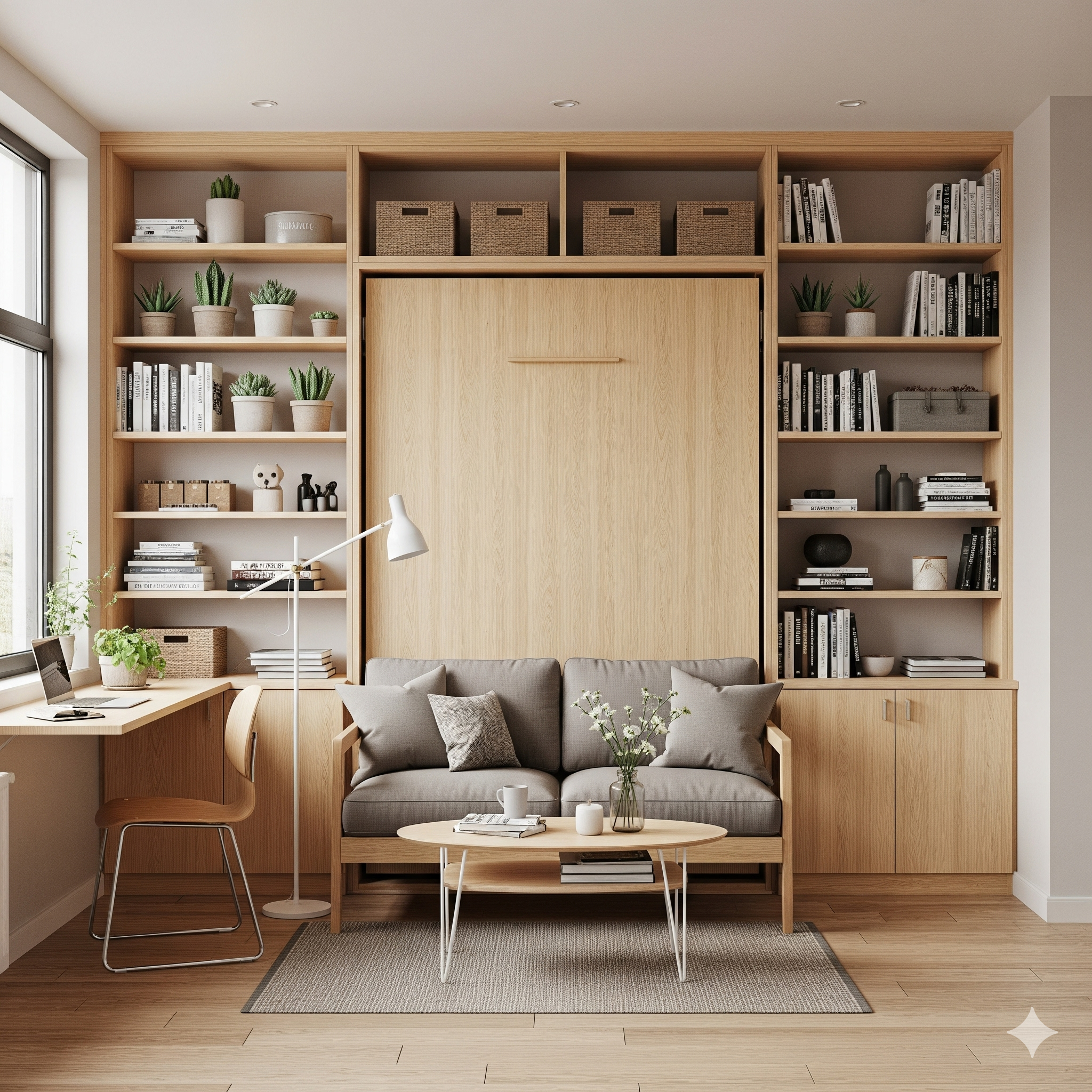Where to Place Mirrors to Make a Room Look Bigger
Discover where to place mirrors to make a room look bigger with our expert guide. Learn decorating tricks and small living room hacks to expand your space.
The Art of Illusion: How to Use Mirrors to Make Any Room Look Bigger and Brighter
If I had to choose one single item that holds the most transformative power in interior design, it would be the mirror. It’s the closest thing we have to real-life magic. A well-placed mirror can double the light in a room, create the illusion of a window where none exists, and make a cramped space feel open, airy, and expansive. As a designer and advocate for beautiful, functional small spaces at Neat Tiny Home, I consider mirrors to be the ultimate secret weapon. They are so much more than just a place to check your reflection; they are dynamic, light-wielding tools that can solve a myriad of design dilemmas.
However, there’s a fine line between a magical illusion and a disorienting funhouse. The effectiveness of a mirror lies almost entirely in its placement. This has led to one of the most persistent questions in decorating: exactly where to place mirrors to make a room look bigger? This guide is my definitive answer. We are going to dive deep into the art and science of decorating with mirrors. We’ll cover the golden rules of placement, explore specific, strategic locations for every room, and reveal some of my favorite advanced small living room hacks. My goal is to give you the confidence to use mirrors not just as accents, but as strategic tools to fundamentally reshape and enhance your space, making your small home feel brighter and more spacious than you ever thought possible.
The Magic of Reflection: The Science and Psychology Behind Using Mirrors
Before we start hanging things on the wall, it’s essential to understand why mirrors are so effective. It’s a fascinating blend of simple physics and complex human psychology. Physically, a mirror is a smooth surface that reflects light in a single, predictable direction. When you place a mirror in a room, you are essentially creating a new pathway for light to travel. It can grab the limited light from a single window and bounce it into the darkest corners of the room, effectively doubling your light source. This simple act of light manipulation is the primary reason why mirrors have been a staple of interior design for centuries, from the Hall of Mirrors in Versailles to the modern minimalist apartment.
The Psychological Impact: Creating a Sense of Openness and Depth
The psychological effect is just as powerful. When we see a reflection in a mirror, our brain perceives it as an extension of the space. The reflection creates a visual trick, an illusion of depth that makes the boundaries of the room feel further away. A large mirror can make a wall seem to disappear, replaced by a view into an identical, adjoining room. This sense of openness can alleviate feelings of claustrophobia and make a small space feel more comfortable and less confined. This is the core principle that answers the question of where to place mirrors to make a room look bigger; we place them where the illusion of continued space will be most believable and impactful. For more on the psychology of interior design, I love the insights on blogs like Apartment Therapy.
Dispelling the Myths: Avoiding the “Funhouse” Effect
The fear many people have is creating a space that feels chaotic or disorienting. The “funhouse” effect typically happens for two reasons: placing too many mirrors in one space, or placing them in a way that creates confusing or infinite reflections (like placing two mirrors directly opposite each other). The other common mistake is placing a mirror where it reflects something unappealing. The key to successful decorating with mirrors is intentionality. A mirror should always have a specific job to do, whether it’s reflecting a beautiful view, amplifying light, or making a hallway feel wider. It should never be an afterthought placed randomly on a wall.
The Golden Rules: The Dos and Don’ts of Decorating with Mirrors
To ensure your mirrors are adding to your space rather than detracting from it, I’ve developed a set of golden rules. These are the foundational principles I follow in every project. By keeping these simple dos and don’ts in mind, you can approach your mirror placement with confidence and a clear strategy. This is the framework that will help you decide exactly where to place mirrors to make a room look bigger.
- DO Reflect Something Beautiful: This is the number one rule. Before you hang a mirror, stand where it will be and look at what is directly opposite. That is what the mirror will reflect. Always aim to reflect the best feature in the room: a window with a beautiful view, a stunning piece of art, a gorgeous light fixture, or an architectural detail.
- DON’T Reflect Clutter: The opposite is also true. A mirror will double whatever it reflects. If you place it opposite a cluttered bookshelf, a messy corner, or a plain, boring wall, you are simply amplifying the clutter and boredom. This is the fastest way to make a room feel more chaotic, not less.
- DO Consider Scale (Go Bigger Than You Think): When it comes to making a room feel bigger, a larger mirror is almost always better. A small, dinky mirror on a large wall can look like clutter itself. A large, floor-length mirror or a substantial framed mirror above a console makes a confident, bold statement and has a much greater impact on the perception of space.
- DON’T Place Mirrors Where They Cause Awkward Reflections: Think about the sightlines from your primary seating areas. You probably don’t want a mirror directly opposite the sofa that forces you to stare at your own reflection all evening. Similarly, be cautious about placing mirrors in a dining room where they might reflect someone while they are eating, which can make some people feel self-conscious.
The Strategic Placement Guide: Where to Place Mirrors to Make a Room Look Bigger
Now that we have the rules down, let’s get specific. Here is my definitive guide to the most effective, high-impact locations for mirrors, designed to solve the common challenges of a small home. These are the tried-and-true placements that designers use again and again because they simply work.
| Room / Area | Ideal Mirror Placement | Primary Purpose |
|---|---|---|
| Entryway / Foyer | Above a console table or a large round mirror on its own. | Create a sense of arrival; bounce light into the home’s entrance. |
| Living Room | Opposite a window, above the sofa, or above the fireplace mantel. | Amplify natural light and create an illusion of depth. |
| Narrow Hallway | A long horizontal mirror or a full-length mirror at the end. | Widen the space and break up the “tunnel” effect. |
| Small Dining Room | On the main wall, positioned to reflect a chandelier or pendant light. | Double the ambient light and add a sense of glamour. |
The #1 Spot: Opposite a Window to Double Your Natural Light
If you remember only one placement from this guide, let it be this one. Placing a large mirror directly opposite your largest window is the most powerful trick in the book. It will capture the maximum amount of natural light and reflect it back into the room, instantly making the space feel brighter and more alive. It also reflects the view from the window, creating the illusion of a second window and bringing a sense of the outdoors in. This is the most effective answer for where to place mirrors to make a room look bigger and brighter.
Advanced Techniques and Small Living Room Hacks
Once you’ve mastered the basics, you can start to play with more advanced and creative mirror placements. These are some of my favorite small living room hacks that use mirrors in less conventional ways to solve specific design problems. These techniques can add a real custom, high-end feel to your decor.
Creating a Faux Window in a Dark Room
If you have a room with no windows at all, a mirror can be a lifesaver. Choose a mirror with a frame that resembles a window pane (like a French window style with multiple panels) and place it on a prominent wall. Then, strategically place a lamp or a floor plant next to it. The mirror will reflect the light from the lamp and the greenery of the plant, creating a convincing illusion of a window and adding a much-needed sense of light and life to the room. For great examples of windowpane mirrors, check out retailers like Pottery Barn.
Using Mirrored Furniture
Mirrored furniture can be a bold choice, but it’s incredibly effective in a small space. A mirrored console table in an entryway, a mirrored coffee table, or even a mirrored cabinet can seem to disappear into the room, reducing its visual weight. These pieces bounce light around at a lower level than a wall-mounted mirror and can add a touch of glamour to your decor. The key is to use it sparingly—one statement piece is usually enough. For beautiful and trendy options, I often browse design-forward stores like West Elm.
The Practical Side: How to Properly Hang a Heavy Mirror
You’ve found the perfect mirror and the perfect spot. The final step is to hang it safely and securely. A large mirror can be very heavy, and improperly hanging one is a serious safety hazard. Taking the time to do this correctly is non-negotiable.
Safety First: Finding Studs and Using the Right Hardware
For any mirror over 10 pounds, a simple nail in the drywall will not suffice. You MUST anchor it properly. The best and safest method is to hang the mirror from a screw that is driven directly into a wall stud. Use a stud finder to locate the studs in your desired area. If a stud isn’t conveniently located, you must use a heavy-duty drywall anchor rated for the weight of your mirror. Toggler bolts or molly bolts are excellent, reliable options that you can find at any hardware store like Lowe’s. Never use the cheap plastic anchors for anything heavy. For a great guide on different types of wall anchors and their weight limits, check out home improvement resources like This Old House.
Mirrors are a truly magical element in a designer’s toolkit. By understanding the principles of light and reflection and by being intentional with your placement, you can wield this magic to transform your small space, making it feel brighter, more open, and endlessly more beautiful.
Frequently Asked Questions (FAQ)
Is it okay to lean a large, full-length mirror against the wall instead of hanging it?
Yes! This is a very popular and stylish look, especially in bedrooms and living rooms. It creates a casual, relaxed vibe and is completely renter-friendly as it requires no holes in the wall. For safety, especially if you have children or pets, it’s a good idea to secure the top of the mirror to the wall with a small, discreet anti-tip furniture strap, even if it’s resting on the floor.
Can I hang a mirror above my bed?
While it can look beautiful, I generally advise caution when hanging anything heavy above where you sleep. If you choose to do so, it is absolutely critical that the mirror is hung impeccably, preferably secured into two studs. As a safer alternative, consider a lightweight, frameless acrylic mirror or a grouping of several very small, light mirrors to get a similar decorative effect without the risk.
What about a mirror gallery wall? How do I make that work?
A mirror gallery wall can be stunning! The key is to create cohesion. Collect a variety of mirrors in different shapes and sizes, but unite them with a common element. This could be the color of the frame (you can spray paint them all one color), the style of the frame (all ornate, or all modern), or the finish (all gold, all black). Arrange them on the floor first to get a layout you love before you start putting nails in the wall. This is one of my favorite advanced decorating with mirrors techniques.





Post Comment